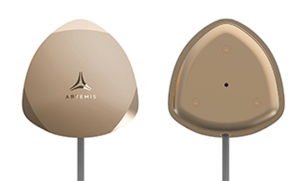
To start Artemis’ pCell technology story, it’s best to begin with something tangible and widely known from mainstream entertainment. Recently, Netflix has voiced concerns with cable provider Comcast regarding trouble with subscriber streaming.
Netflix, offering movies and television programming via online streaming or hard copy for a monthly fee, is among entertainment’s most popular providers of content. Comcast insists interruptions in use are due to Netflix’s ability to stream the content to Comcast and not due to Comcast’s ability to send signals to users.
In comes pCell, a possible solution to the problem, presenting mobile device users the ability to harness ‘their own, personalized network.’ The technology sounds intriguing in theory, but will consumers and integrally needed networks comply?
How it Works
While more signals equal more possible disturbances regarding emissions, pCell seeks to exploit the prevalence of signals and network towers, accepting signals from both parties while refining and strengthening signals going to end users, resulting in (an expected) less interrupted and more enjoyable viewing experience.
Using technical jargon, pCell exacts DIDO or distributed input-output technology. DIDO may enable devices to exceed 1,000x (or even 10,000x) the limit of normal capacity or spectrum provided ‘limits.’
Benefits
In theory, pCell technology offers streamed information faster and without interruption, making it a no-brainer for end consumers. However, if this ship is going to take off into the sunset, it needs the winds of major network suppliers in its sails. So far, major suppliers, also expected to benefit, are not biting.
pCell is expected to deploy faster and at lesser costs as compared to present logistics; great news, considering the popularity of downloading and watching content via mobile devices (Download and convert content with the software at http://youtubedownload.altervista.org/, just make sure you respect intellectual property rights when using downloaded material.) Furthermore, base radio stations will replace large, visually displeasing cellular towers.
The company paints a picture of an infinite number of pCells all over the world, giving users almost unlimited access to the web. In fact, Steve Perlman, founder of Artemis Networks, demonstrated the power of his invention by running a truly ridiculous number of devices all at once. How many devices? Well, he’s runs a show streaming at 1080p, at 10MHz on laptops over an LTE connection, 4K streams of Netflix, running on 4K T.V.s, and HD video running a half-dozen iPhones with 5MHz bandwidth. The amazing part? He’s getting full spectrum bandwidth simultaneously on all devices. But, there’s a problem.
Mutual Agreement
pCell technology is a share-all benefit; a consumer would need to install the software along with their provider in order to enjoy the described benefits. Moreover, as one analyst describes. The full adoption of pCell technology would not completely make cellular towers obsolete; towers are needed as backup or substitute.
There’s also the issue with pWave Radio placement. The pWave Radio is the hardware component necessary to make the system work. And, while these radios can be placed almost anywhere, the problem is adoptability. Since there’s no existing infrastructure, you have to convince businesses and governments to start placing these things everywhere and anywhere imaginable. What about maintenance costs? No word from the manufacturer.
Finally, there’s the fact that cell towers are still required. That’s probably why major carriers aren’t jumping all over this one.
Different Name in Same Game
Another analyst is quick to point out that Artemis’ pCell stance is not altogether unique. Rival, Collision Communications, has patented similar technology in recent history, subsequently making no major impact on the standing mobile market. But, there’s many reasons why this could be so. For example, poor marketing often leads companies like Collision Communication down the path of ruin before they ever get started. Bad UIs can also halt progress rather quickly.
Is Artemis the Answer?
Going back to the Netflix/Comcast issue – it would seem the reaction of the public dictates the negotiating power of brands. For example, Comcast delivers cable and Internet services to a majority of American households. It would be wise of Netflix to consider the lucrative benefits of maintaining a ‘friendship’ with the provider.
Conversely, Netflix, an alternative to cable, is also widely popular, and a wise Netflix negotiation with one of Comcast’s competitors could place the cable giant at a stark disadvantage.
Artemis’ pCell technology may or may not be the immediate answer to streaming woes and an agreement between providers, but it continues the discussion and presents more options to consumers, the inextricable jury and judge of each new digital content case.
And, at least Artemis has something going for it that others don’t: money. The company is well funded, able to scale its operations, and has the ambition to follow through.
Stacy Rogers is crazy about technology innovations. From mobile capabilities to useful apps, she enjoys blogging about the ideas and trends in the tech industry.
